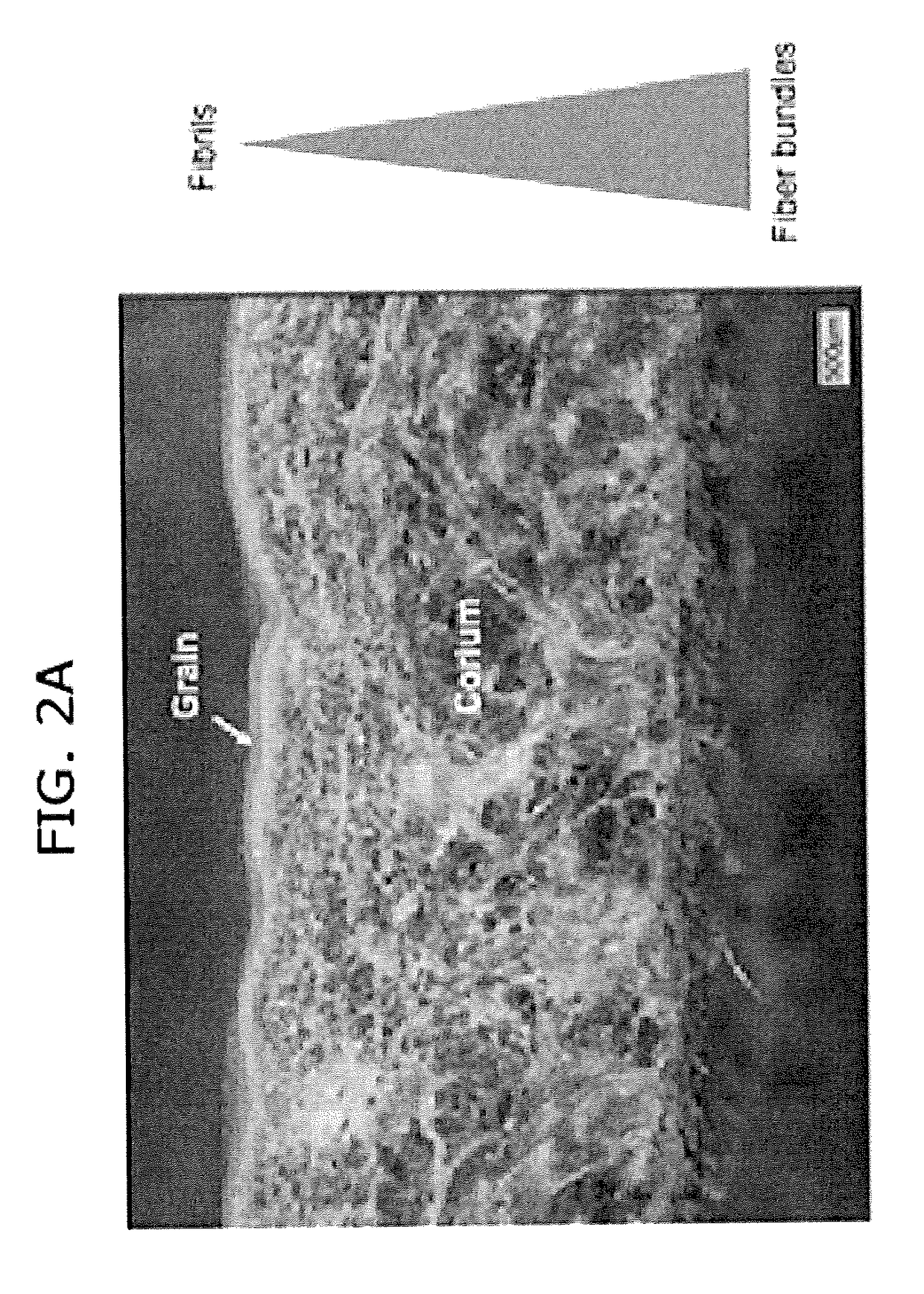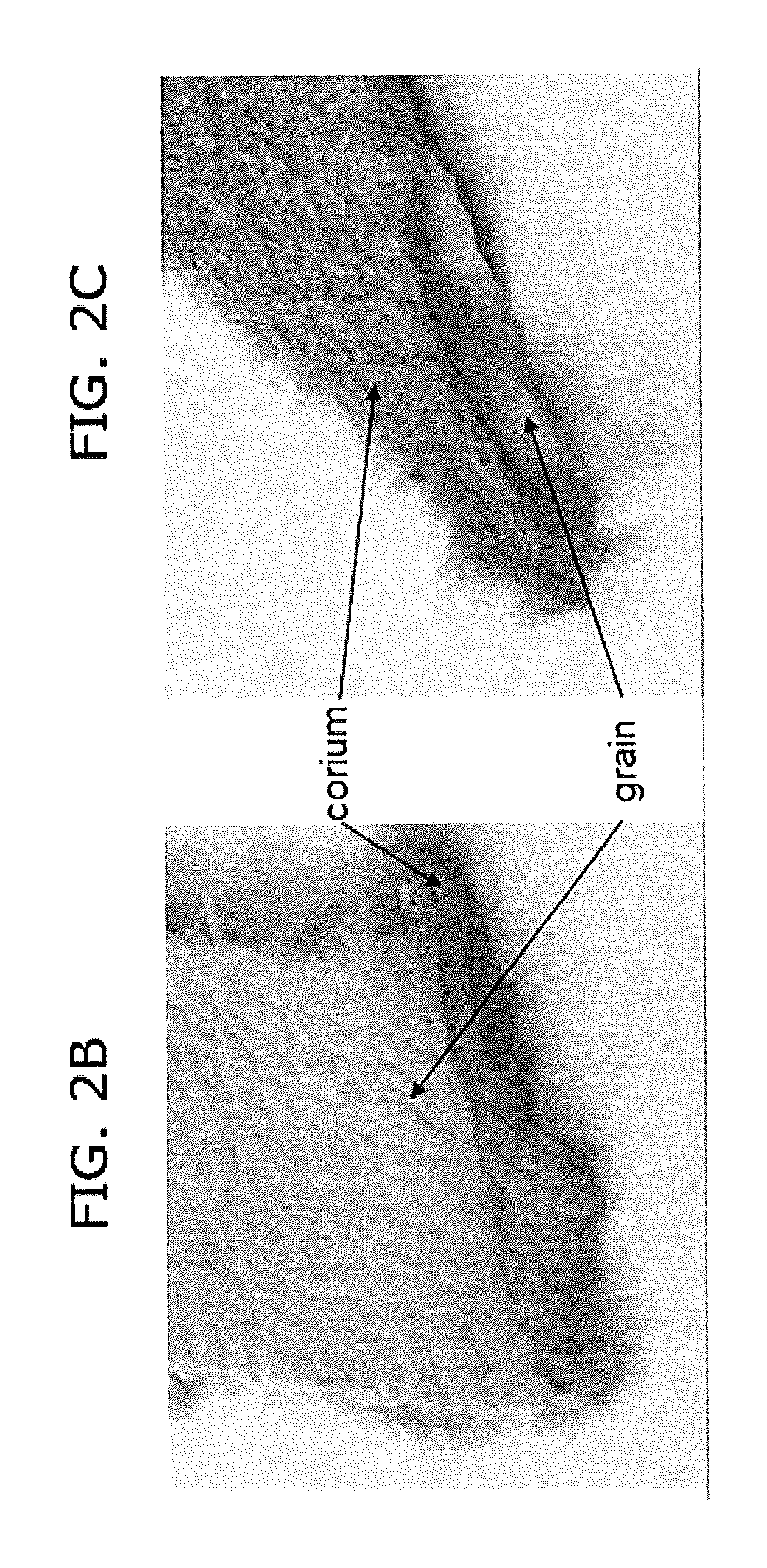Composite biofabricated material
- Summary
- Abstract
- Description
- Claims
- Application Information
AI Technical Summary
Benefits of technology
Problems solved by technology
Method used
Image
Examples
embodiments
Composites
[0198]The invention includes, but is not limited to biofabricated materials components having the features described below. The composites of the invention include those where (i) one or more secondary components, such as a particle, wire, fabric, or three dimensional object is incorporated or embedded in a network of collagen fibrils, (ii) where a biofabricated material is coated or deposited, for example by filtration, on one side of one or more secondary components such as a woven or nonwoven fabric, such as fabric, paper or regenerated cellulose, (iii) where a biofabricated component is coated or deposited on both sides of one or more secondary materials having top and bottom sides or inner and outer sides, or (iv) where a biofabricated material component and one or more secondary components are adhered, attached or laminated to each other, for example, by direct lamination with or without an adhesive.
[0199]The biofabricated material once produced may be associated wit...
example 1
Controlling the Thickness of Biofabricated Leather
[0331]The thickness of the biofabricated material used in a composite may be controlled by adjusting collagen content. Hydrogels of extracted bovine type I collagen were formed at different collagen concentrations and volumes to produce dried collagen materials of different thicknesses. Collagen was dissolved in 0.01N HCl at either 5 g / L or 9 g / L, then 1 part 10× PBS was added to 9 parts dissolved collagen to induce collagen fibrillation and gel formation.
[0332]Solutions of either 0.8 L or 1.6 L of the fibrillating collagen were then cast into molds and incubated at 25° C. to allow hydrogel formation. The 0.8 L solution produced a gel of 1.5 cm thickness while the 1. 7L solution produced a gel of 3.0 cm thickness. These gels were dehydrated and lubricated in acetone, then dried and mechanically staked into a leather like material. The thickness of the final dried material correlated with the total amount of collagen in the starting h...
example 2
Production of Biofabricated Leather from Type I Collagen
[0334]The biofabricated component of the composites described herein may be produced from Type I collagen.
[0335]Type I collagen was purchased from Wuxi Biot Bio-technology Company, ltd. (Medical Collagen Sponge). The collagen was isolated from bovine tendon by acid treatment followed by pepsin digestion, and was purified by size exclusion chromatography, frozen and lyophilized.
[0336]The lyophilized protein (4.1 g) was dissolved in 733 ml 0.01 N HCL using an overhead mixer. After the collagen was adequately dissolved, as evidenced by a lack of solid collagen sponge in the solution (at least 1 hr mixing at 1,600 rpm), 82 uL of the tanning agent Relugan GTW was added to the solution followed by 81 mL of a 10× PBS, pH 11.2 to raise the pH of the solution to 7.2.
[0337]The solution was then mixed for 3 min before pouring the solution into a silicon mold. The collagen solution was incubated in the silicon mold for 2 hrs at 25° C. to a...
PUM
| Property | Measurement | Unit |
|---|---|---|
| Fraction | aaaaa | aaaaa |
| Fraction | aaaaa | aaaaa |
| Percent by mass | aaaaa | aaaaa |
Abstract
Description
Claims
Application Information
 Login to View More
Login to View More - R&D
- Intellectual Property
- Life Sciences
- Materials
- Tech Scout
- Unparalleled Data Quality
- Higher Quality Content
- 60% Fewer Hallucinations
Browse by: Latest US Patents, China's latest patents, Technical Efficacy Thesaurus, Application Domain, Technology Topic, Popular Technical Reports.
© 2025 PatSnap. All rights reserved.Legal|Privacy policy|Modern Slavery Act Transparency Statement|Sitemap|About US| Contact US: help@patsnap.com



